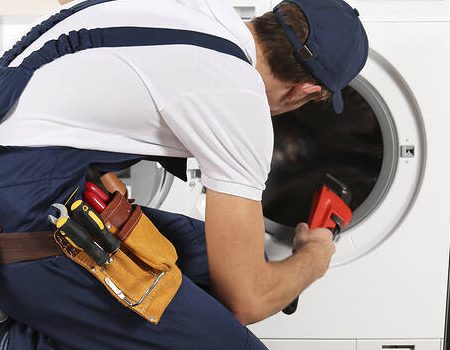How to Balance a Washing Machine: The Ultimate Guide
A washing machine is an essential appliance in any household, but when it starts wobbling and making loud noises, it can quickly turn from a helpful device into a source of frustration. If you’ve ever been annoyed by the constant rattling or worried that your washing machine might walk across the laundry room, you’re not alone. These problems often stem from an unbalanced washing machine. Thankfully, you can fix it! In this guide, we’ll walk you through everything you need to know about how to balance a washing machine effectively.
Why Is It Important to Balance a Washing Machine?
Before diving into the steps to balance a washing machine, it’s important to understand why this issue matters. A properly balanced washing machine ensures your appliance operates smoothly, quietly, and efficiently. Here’s why balancing your washing machine is crucial:
- Prevents Damage to the Machine: When a washing machine isn’t balanced, it can cause excessive vibrations. These vibrations, over time, can lead to internal damage. Parts like the drum, motor, and suspension system are particularly at risk.
- Reduces Noise: An unbalanced washing machine is often noisy, disrupting the peace in your home. By balancing it, you can enjoy a quieter laundry experience.
- Improves Efficiency: When your washing machine is balanced, it operates more efficiently. This means your clothes get cleaner, and you save on energy bills.
- Extends the Lifespan: A balanced washing machine lasts longer. The stress on the components is minimized, which reduces wear and tear.
Now that you know why it’s important, let’s move on to the practical steps to balance a washing machine.
How to Tell if Your Washing Machine is Unbalanced
Before you start fixing the issue, you need to confirm whether your washing machine is truly unbalanced. Here are some tell-tale signs that your washing machine needs balancing:
- Excessive Vibration: If your washing machine shakes vigorously during the spin cycle, it’s a clear sign that it’s unbalanced.
- Loud Noises: Thumping, banging, or clunking noises, especially during the spin cycle, indicate that your washing machine isn’t level.
- Walking Washer: If your washing machine moves or “walks” across the floor during operation, it’s definitely unbalanced.
- Leaking Water: Sometimes, an unbalanced washing machine can cause water to leak from the appliance. This could be due to the drum being off-center.
- Uneven Loads: If your clothes are soaking wet after a cycle or unevenly distributed in the drum, this could mean the machine is unbalanced.
If you’ve noticed any of these signs, it’s time to take action. Here’s how you can balance a washing machine in a few simple steps.
Steps to Balance a Washing Machine
Balancing a washing machine is easier than you might think. Follow these steps to get your machine back in working order:
1. Check the Level of the Washing Machine
The first step to balance a washing machine is to ensure it’s level. Use a spirit level to check the balance of your washing machine. Place the level on top of the machine, front to back and side to side. If the bubble isn’t centered, your washing machine isn’t level.
- Adjust the Feet: Most washing machines have adjustable feet. Turn the feet clockwise or counterclockwise to raise or lower the machine until it’s perfectly level. Make small adjustments and check the level after each tweak.
- Tighten the Locking Nuts: Once the washing machine is level, tighten the locking nuts on the adjustable feet. This will keep the feet from moving out of place and ensure the machine stays balanced.
2. Distribute the Load Evenly
An uneven load is one of the most common causes of an unbalanced washing machine. If you notice that your washing machine becomes unbalanced only during certain cycles, the issue might be with how you’re loading it.
- Sort Your Laundry: Before loading your washing machine, make sure to sort your laundry by fabric type and weight. Heavier items like towels and blankets should be balanced out with lighter clothes.
- Avoid Overloading: Overloading your washing machine can cause it to become unbalanced. Check your machine’s manual for the recommended load size and stick to it.
- Evenly Distribute Clothes: When loading the drum, distribute the clothes evenly around the drum. This helps the machine maintain balance throughout the cycle.
3. Inspect the Shock Absorbers
Shock absorbers are vital components that help to balance a washing machine by reducing the vibrations caused during operation. If these absorbers are worn out or damaged, your washing machine may become unbalanced.
- Locate the Shock Absorbers: Most washing machines have two to four shock absorbers located inside the machine. You may need to remove the back or front panel to access them.
- Check for Damage: Look for signs of wear, such as oil leakage or broken parts. If the shock absorbers are damaged, they will need to be replaced.
- Replace if Necessary: If you find that the shock absorbers are indeed faulty, you can order replacements from your washing machine’s manufacturer. Installation usually requires basic tools and can be done in under an hour.
4. Inspect the Suspension Springs
Suspension springs work alongside the shock absorbers to balance a washing machine. These springs support the drum and keep it centered. If they become stretched or broken, the drum can shift, causing the machine to be unbalanced.
- Check the Springs: Locate the suspension springs, which are usually attached to the top of the drum and the frame of the washing machine. Inspect them for signs of stretching or damage.
- Replace if Needed: If you find any issues with the springs, they’ll need to be replaced. It’s a good idea to replace all the springs at once to ensure even support.
5. Examine the Counterweights
Many washing machines have counterweights to help balance the drum. These counterweights are usually made of concrete or metal and are located inside the machine. Over time, they can become loose or cracked, leading to an unbalanced washing machine.
- Locate the Counterweights: You may need to remove the machine’s panels to access the counterweights.
- Check for Damage: Inspect the counterweights for cracks or other damage. Also, check that they’re securely fastened.
- Tighten or Replace: If the counterweights are loose, tighten the bolts. If they’re damaged, you’ll need to replace them.
6. Check the Floor Surface
Sometimes, the problem isn’t with the washing machine but with the surface it’s on. If your washing machine is on an uneven or slippery floor, it can easily become unbalanced.
- Use Anti-Vibration Pads: Anti-vibration pads can help balance a washing machine by providing a more stable base. Place these pads under each foot of the washing machine.
- Ensure a Solid Surface: Make sure the washing machine is on a solid, level surface. If the floor is uneven, you may need to make adjustments or move the washing machine to a different location.
Common Mistakes to Avoid When Balancing a Washing Machine
Balancing a washing machine can be straightforward, but there are common mistakes that people make during the process. Avoiding these can save you time and frustration:
- Not Checking the Level Regularly: Even after balancing your washing machine, it’s important to check the level every few months. Over time, the machine can shift, requiring readjustment.
- Ignoring Strange Noises: If your washing machine starts making unusual noises, don’t ignore them. These could be signs that the machine is becoming unbalanced again.
- Overlooking the Floor Condition: As mentioned earlier, the floor your washing machine sits on plays a big role in its balance. Don’t overlook this factor when troubleshooting.
- Neglecting Regular Maintenance: Regular maintenance can help prevent balancing issues. Clean the drum, check the shock absorbers, and make sure all components are in good condition.
When to Call a Professional
While balancing a washing machine is often a DIY task, there are times when it’s best to call in a professional. Here’s when you should consider getting help:
- Persistent Unbalance Issues: If you’ve tried everything and your washing machine is still unbalanced, a professional technician can diagnose the problem.
- Electrical or Mechanical Issues: If the unbalance is due to an electrical or mechanical failure, such as a faulty motor or broken drum, it’s best to call a professional.
- New Installations: If you’ve just bought a new washing machine and can’t seem to get it balanced, a professional can ensure it’s installed correctly.
In case you need professional assistance, don’t hesitate to call us at 0508700774. Our expert technicians are ready to help you balance your washing machine and get it running smoothly again.
Conclusion
Balancing a washing machine is a critical task that ensures the longevity and efficiency of your appliance. By following the steps outlined in this guide, you can easily balance your washing machine and enjoy a quieter, more efficient laundry experience. Remember to regularly check the level, distribute loads evenly, and inspect key components like shock absorbers and suspension springs.
If you find the task too challenging or continue experiencing issues, don’t hesitate to reach out to a professional. With the right care and maintenance, your washing machine will serve you well for years to come.
For any further assistance, feel free to call us at 0508700774. We’re here to help you keep your home running smoothly!













Recent Comments